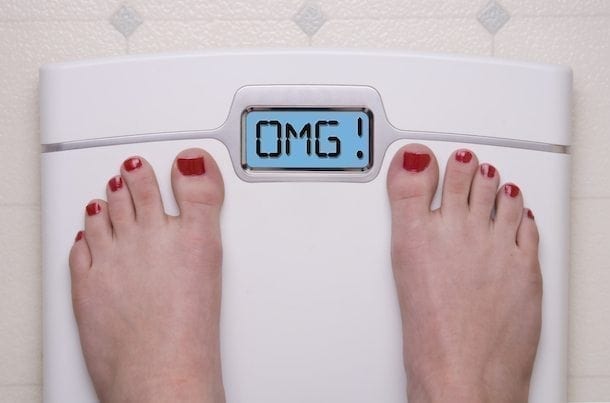
The Scale Debate: Is Your Metric Tracking Progress or Is It a Distraction?
A few weeks ago I wrote an article on why I think scale weight is a poor metric. The discussion in the comments of that post was lively and filled with great advice from MyFitnessPal users, so I wanted to revisit the topic and expand on it—with all of your great input in mind.
When I thought I was going to have a career different than the one I have now, a Marine Corps aviator took me up in an airplane and let me sit in the co-pilot’s seat. I was instantly overwhelmed by all of the switches, gauges, LCD screens, and read-outs in that tiny cockpit. My eyes darted around, trying to take it all in. “How do you know where to look?” I asked.
“When we’re cruising at altitude, I just look at the heading every now and then to make sure we’re on course,” the pilot answered. “Everything else has an alarm to let me know where my attention should be. 99% of the time, I only need to check that I’m on course—the rest can be a distraction,” she said.
I immediately remembered that soldier’s advice when I read a comment on my previous post. MyFitnessPal user shirleygra shared what kept her on track as she lost a significant amount of weight over the course of 18 months. Here are three I found particularly inspiring:
“1. Faith: for those months when the scale doesn’t move; that in the long term, weight loss will average out to ½ to 2 pounds per week if you do it sensibly.
2. MyFitnessPal progress tracker: if you feel stuck look back at where you started and do some calculations to see what your average weekly weight loss has been.
3. Google calendar: plan ahead to lose about ½ pound each week. I put in a new weight for each coming Sunday, leading up to my end goal. This way you’re looking forward, rather than focusing on being stuck. If you lose more then you have the fun of moving the future weights forward.”
Shirleygra’s tools help to put the number you are seeing on the scale in context of what you can reasonably expect. Without context, scale weight becomes a distraction. And the only way to know if you’re making progress is to use metrics that show you where you’re heading. If you’re doing things sensibly, the scale will move in an “expected” range.
I put “expected” in quotation marks, because most people have no idea what to expect when they step on the scale. Just that it should always go down when they are “dieting” and always go up when they’re not. But if you weigh yourself every single day, that’s an unreasonable expectation. It’s like trying to fly an airplane based solely on the fuel level gauge (“I know I’ll be at my destination when I am almost out of fuel, so I’m gonna stare at this gauge until it’s at zero!”).
Instead, it’s better to think of the scale as one of those other gauges in the cockpit—one that you don’t need to look at often. If you are dropping and average of ½ to 2 pounds a week, then you’re on track. If your average is higher or lower than that, something is up. And when I say average, I mean the average of all the weeks you’ve been trying to lose weight. If you lose 2 pounds a week for 6 weeks and then 0 pounds for 6 weeks, that’s an average of 1 pounds of weight loss per week over 12 weeks—and that’s the expected range. It might be frustrating, but for most people with a lot of weight to lose that’s the reality.
Like the pilot’s compass, which shows her heading, good metrics should show that you’re doing the right things to get you to where you want to go. They should track what you’re learning, what you’re doing to get to your goal, and how you’re improving. Good metrics give you feedback for the process of losing weight (eating less and moving more), not just the outcome of whether or not you’re losing weight.
As I’ve mentioned before, taking pictures, using a tape measure, playing with your kids, and monitoring your physical fitness are all good metrics you can track to see if you’re headed in the right direction. Shirleygra offered another good one: a pair of skinny jeans one or two sizes below the one you currently wear—“Try them on monthly and see how close the zipper gets to closing,” she says. Two more you can try:
Track a new habit People confuse weighing themselves every day with discipline, but stepping on a machine that guesses how many atoms you have is not discipline. Eating colorful vegetables every day is discipline. So if you want a metric for discipline, count how many days a week you’re eating colorful vegetables!
Track movement An inexpensive pedometer or the fancy iPhone 5s can help you track how many steps you’re taking daily. Working every day to keep that number high is a great way to know you’re headed in the right direction.
How do you feel about the scale? Do you find it encouraging or distracting? What else are you using to measure your progress? Let’s keep the conversation going in the comments below!














